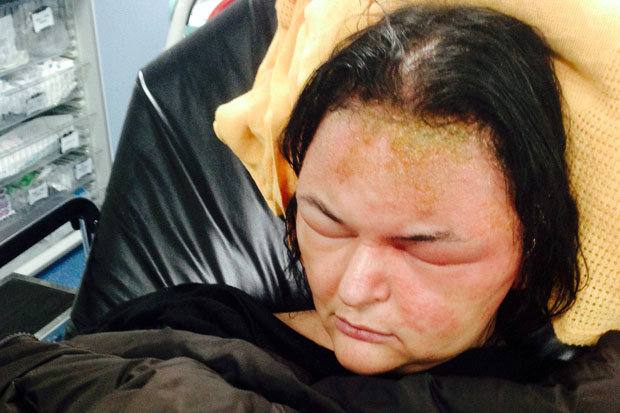There are tons of hair dye products available out there, suitable for just about everyone's style and color needs. However, most people often skip doing recommended allergy tests or checking ingredient labels before using dye, which can lead to some horrible results.
The only way you will know if you are allergic without testing is by using the product and seeing if you have a reaction. If you skip the patch test it is important to know some of the symptoms of hair dye allergies and how you can treat them.
What Triggers Allergic Reactions to Hair Dye?
Hair dye requires a number of chemicals in order to change the color of your hair, and these can vary in levels of toxicity and exposure required to cause outbreak. Most products include para-phenylenediamine, or PPD, which has been shown to be one of the best ways of effectively changing hair colors, but is also a leading cause of hair dye allergic reactions.
The reason for PPD's strength as an effective dye processor is that it reaches the hair shaft and binds to skin proteins, which is why many people show an allergic reaction to it after use. In fact, some countries have even banned the use of PPD in hair dye products because of this.
Some dye products also contain cobalt or glyceryl thioglycolate, both chemicals that have caused reactions in sensitive individuals.
What Symptoms Would Occur?
 The symptoms that you will experience during an allergic reaction to hair dye will typically vary based on your sensitivity and the actual chemicals used, but you may feel symptoms in your body from head to toe.
The symptoms that you will experience during an allergic reaction to hair dye will typically vary based on your sensitivity and the actual chemicals used, but you may feel symptoms in your body from head to toe.
Mild Irritation
Most people will experience allergic reactions in the form of mild irritation to the skin in the head area, including around the eyes and on the scalp. This typically occurs when skin is directly exposed to PPD chemicals, and may take up to two days to start showing, but can also result with a burning sensation as well as red, swollen, dry, blistered, thickened or cracked skin immediately on use.
Mild Allergic Reaction
Typical allergic reactions like itching and swelling can also accompany hair dye reactions. You may notice rashes in different parts of your body, both in the hair area and not, and any redness or inflammation may be a result of allergic reaction.
Severe Allergic Reaction
Anaphylactic shock is one of the greatest concerns to allergy sufferers, and can be fatal if not immediately addressed. Symptoms include:
- Itchiness
- A rash that is raised and red
- Swollen lips, hands, feet and eyes (the swelling of eyelids can even make it difficult to open eyes)
- Faintness or lightheadedness
- Swollen mouth, tongue or throat, if severe, may even cause swallowing and breathing difficulties
- Wheezing
- Abdominal pain, nausea, vomiting
- Collapsing or unconsciousness
How Can It Be Treated?
If you are suffering from an allergic reaction to hair dye and are in anaphylactic shock, call emergency services immediately, or treat yourself with an injection of adrenaline if you have one available and know how to use it.
For milder symptoms, try washing your hair immediately to remove any remaining dye, and apply gentle cream to any irritated area to soothe inflammation. Steroid creams are very helpful for reducing allergic reactions and can be purchased at most pharmacies. Ice can also be used to help sooth the area and reduce swelling.
Precautions to Avoid Allergic Reactions and Other Possible Side Effects
The most effective way to reduce allergic reaction to hair dye is to be proactive.
- Test before use: If you are using a new product, you should always do an allergy test by placing a small dot of dye near your scalp and behind your ear and leaving it on there for a couple of days. If you have no reaction then you know you are safe to use the product, and a small patch of irritation is far preferable to having a full-body break out. Even trained hair professionals and stylists do allergy tests for their customers.
- Wash the dye in recommended time: You also always want to be sure to remove the dye in the amount of time the product recommends. Leaving it longer will only increase your risk of reaction and can damage your hair.
- Always wear gloves to protect exposed skin, and be careful when mixing products, as they are toxic chemicals and you are causing a chemical reaction to activate the dye.
- Follow all directions exactly, and never mix two brands at the same time. Make sure you are in a well-ventilated area, and never directly breathe fumes.
- Skip your eyebrow area, as this can result in serious damage to your eyes and other parts of the face.
